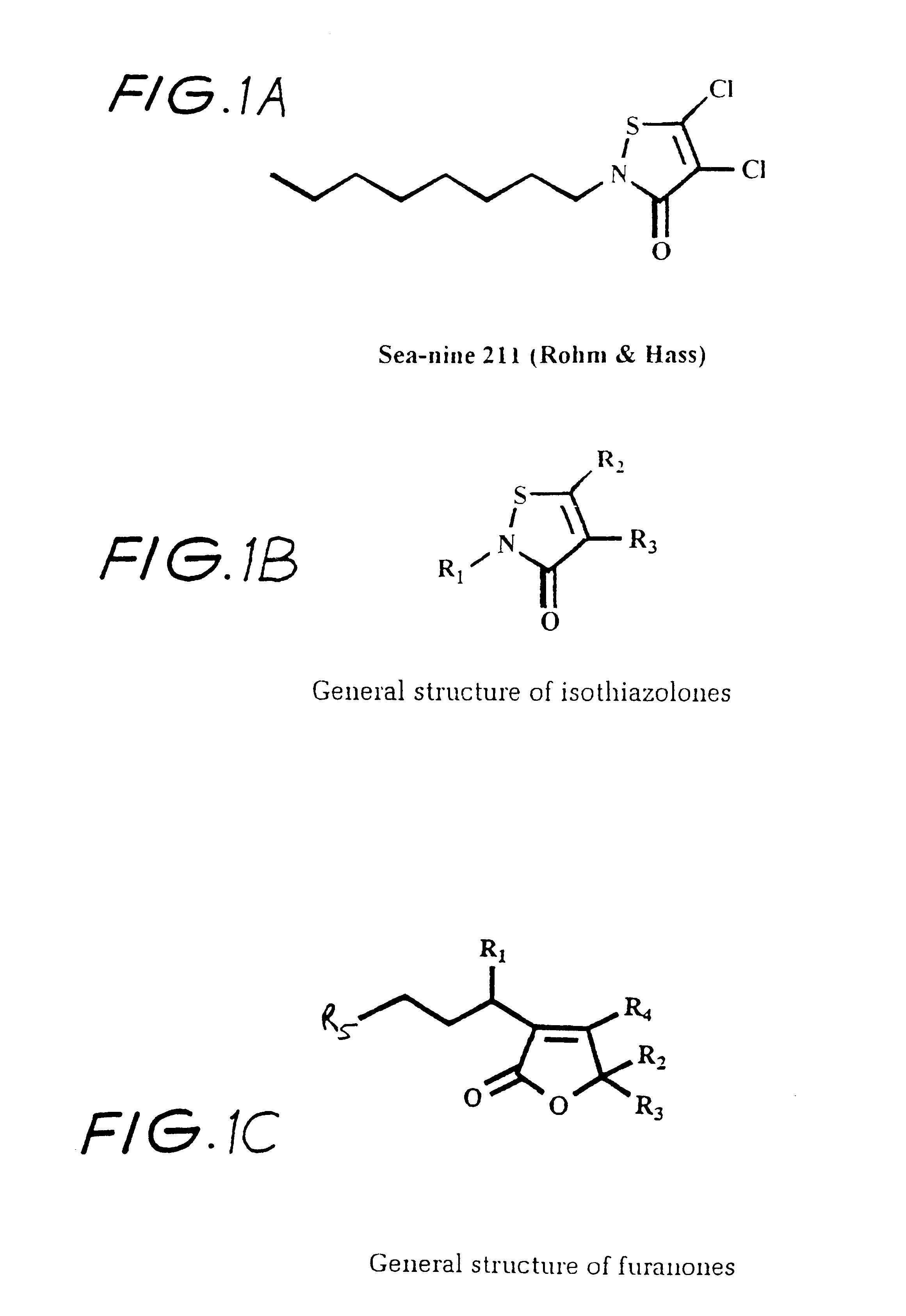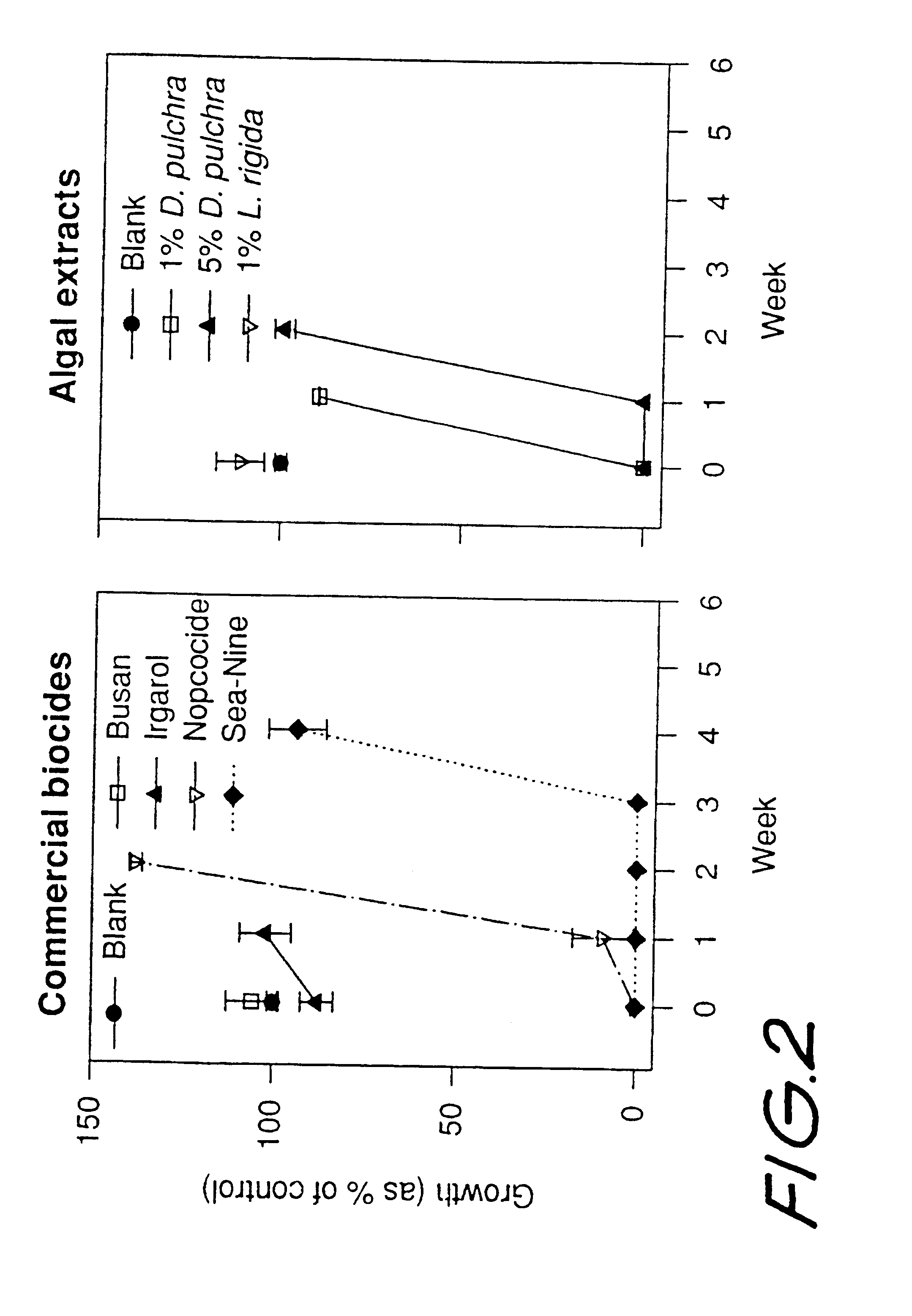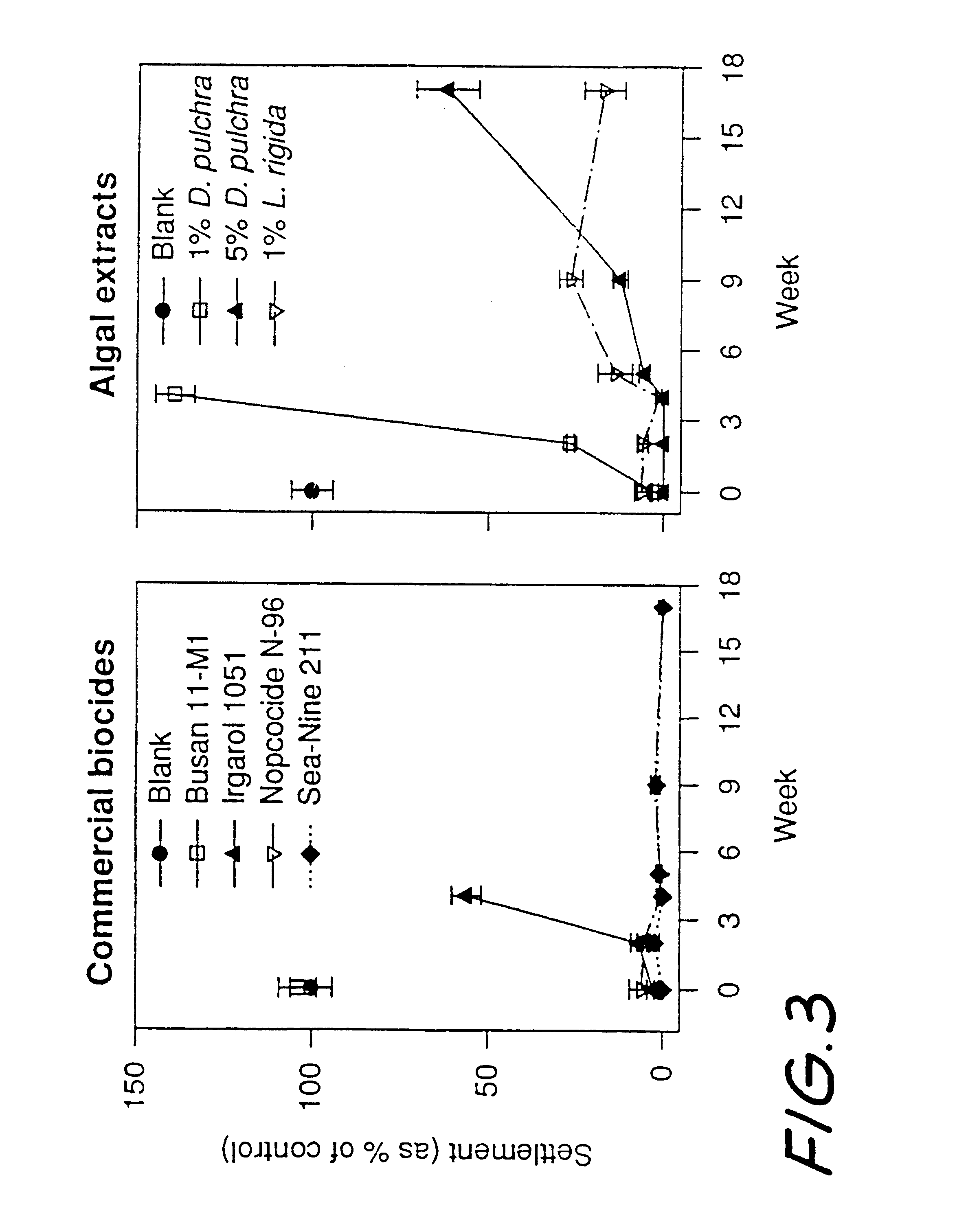Antifouling polymers
a polymer and polymer technology, applied in the field of polymer composition, can solve the problems of reducing the supply of dissolved oxygen and the removal of excess feed and waste products, affecting the stability of the coating, and affecting the stability of the coating, and achieve the effect of low release ra
- Summary
- Abstract
- Description
- Claims
- Application Information
AI Technical Summary
Benefits of technology
Problems solved by technology
Method used
Image
Examples
example i
Single Polymer (HDPE) Incorporating Sea-Nine 211.TM.
The materials were prepared by extruding narrow sheets using a Haake Rheocode 90 system equipped with a laboratory-scale Rheomex TW 100 counter-rotation twin screw extruder fitted with a slit die. The dimensions of the die were: width=15 cm and thickness=1 mm. The Sea-Nine 211.TM. was premixed with HDPE in the formulation: HDPE: Dried Sea-Nine 211.TM.=95:5.
The screw rotation speed was 50 rpm. The temperature profile along the extruder barrel was set at 160, 170, 180, 170.degree. C. (from feed zone to die).
example ii
Polymer Blends (HDPE / EVA) Incorporating Sea-Nine 211.TM.
Step 1:
Sea-Nine 211.TM. is incorporated into EVA at a loading of 10% using a Haake Rheocord 90 system equipped with a laboratory-scale Rheomex TW 100 counter-rotating twin screw extruder fitted with a rod die (F 2 mm). The Sea-Nine 211.TM. was premixed with EVA in the formulation: EVA:Sea-Nine 211.TM.=90:10.
The screw speed was 60 rpm. The temperature profile along the extruder barrel was set at 110, 110, 120, 130.degree. C. (from feed zone to die). The extruded materials were granulated for next application.
Step II:
HDPE was blended with the EVA incorporating with Sea-Nine 211.TM. using a Haake Rheocord 90 system equipped with a laboratory-scale Rheomex TW 100 counter-rotating twin screw extruder fitted with a slit die. The dimensions of the die were: width=15 cm and thickness=1 mm. The EVA incorporating with Sea-Nine 211.TM. was premixed with HDPE in the formulation: HDPE:EVA incorporating Sea-Nine 211.TM.=90:10. The final Sea-...
PUM
| Property | Measurement | Unit |
|---|---|---|
| Fraction | aaaaa | aaaaa |
| Time | aaaaa | aaaaa |
| Time | aaaaa | aaaaa |
Abstract
Description
Claims
Application Information
 Login to View More
Login to View More - R&D
- Intellectual Property
- Life Sciences
- Materials
- Tech Scout
- Unparalleled Data Quality
- Higher Quality Content
- 60% Fewer Hallucinations
Browse by: Latest US Patents, China's latest patents, Technical Efficacy Thesaurus, Application Domain, Technology Topic, Popular Technical Reports.
© 2025 PatSnap. All rights reserved.Legal|Privacy policy|Modern Slavery Act Transparency Statement|Sitemap|About US| Contact US: help@patsnap.com



